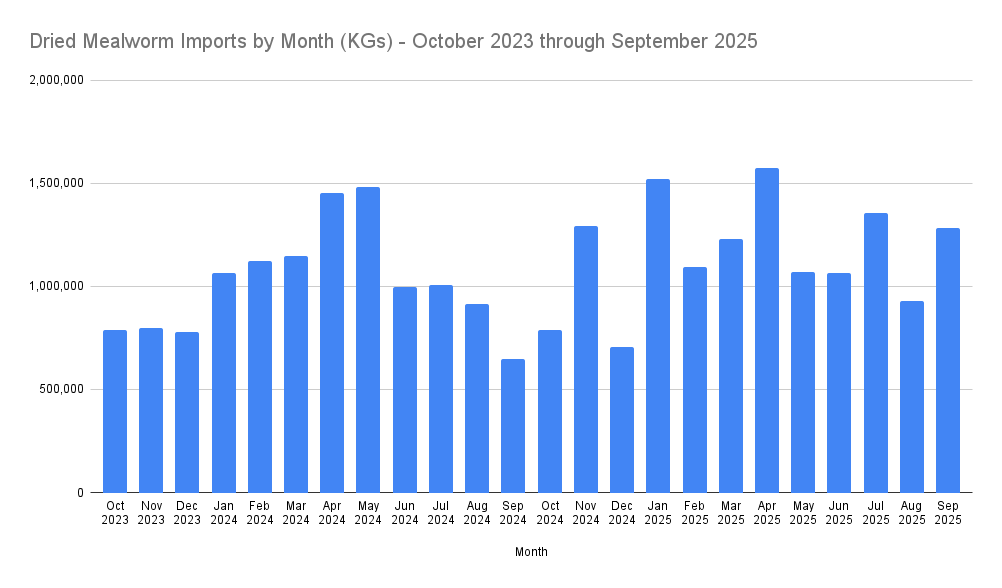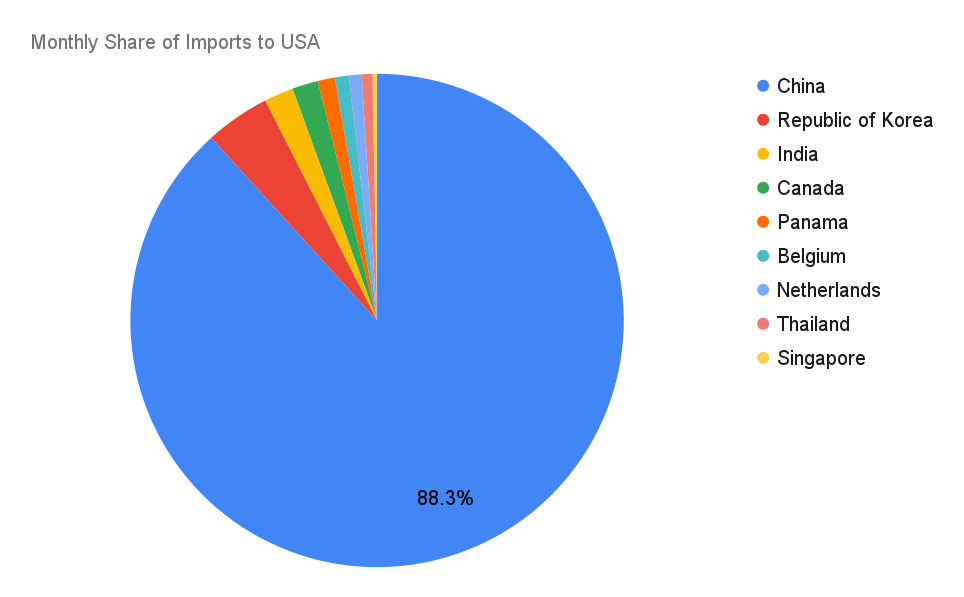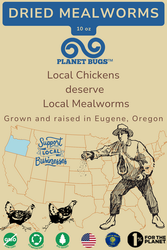Can the US Compete in the Dried Mealworm Market?
Posted by Michael Campbell on Oct 28th 2025
A while ago we heard rumors in the insect industry: almost all dried mealworms sold in the United States are imported. The number floating around was 95% or more.
To be honest, we were skeptical. Could domestic production really be that small? We decided to dig into the data.
The Hunt for Data
Finding this information isn't as simple as you might think. Unlike commodities like corn, soybeans, or pork bellies, there are no mainstream government reports on dried mealworm production.
So, we had to turn to specialized vendors who track import data (Zauba). What we found was staggering.
For the last two years, the US has been importing over 500,000 kilograms (that's over 1.1 million pounds!) of dried mealworms every single month. In some months, that figure topped 1 million kilograms.

What About US Producers?
This leads to the next logical question: How much is the US producing?
The short answer is we don’t know for sure, but it’s not nearly enough to meet demand. The US has a healthy community of small and medium-sized farms growing live mealworms, which primarily serve the exotic pet trade.
But the market for dried mealworms—a pet treat for birds (mainly for backyard poultry and wild birds)—is a different story. We even saw one of the industry's most prominent, venture-backed players, Beta Hatch, unfortunately, have to close its doors in 2023 amidst a tough fundraising climate.
Understanding the Imbalance
When we look at the import data, the vast majority of these mealworms originate from China.

This isn't a criticism; it's an economic reality we need to understand. According to industry insiders, the Chinese government reportedly provides significant support to its insect farmers and processors. We’ve heard that infrastructure, like buildings and equipment, is often heavily subsidized or provided for free (or nearly so).
This means businesses there need only pay for their direct inputs (feedstocks, power, etc.) and labor. For a small farmer in the US trying to build from the ground up, that’s a steep uphill battle.
Game On.
So, what does this mean for us at PlanetBugs?
It means Game On.
We don't see this as a defeat; we see it as a challenge. We are passionate about building a distributed network of local, small, nimble mealworm farms across the the United States. We want to open readers' eyes to the current situation and show that there is another way.
The path won't be easy. To compete, we have to get our unit economics to match theirs (we're getting CLOSE!). And we must keep our capital costs relatively low.
But we are up for the challenge. The goal is clear: to give American consumers a choice and to help build a new, domestic industry from the ground up.

